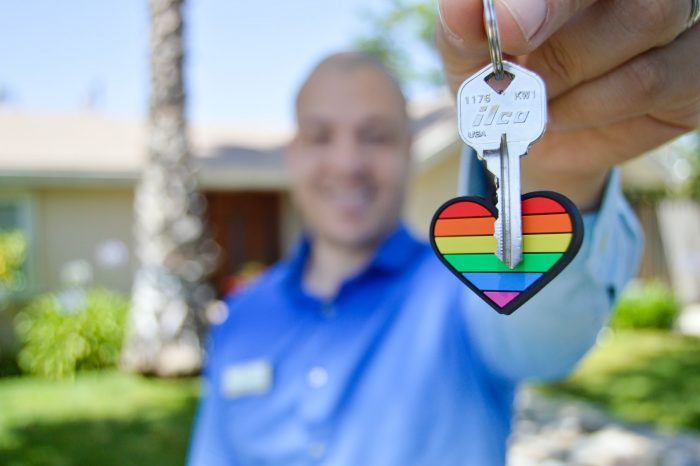Texas is known for being a business-friendly state, and with a booming economy and a large population, it’s a great place to start a business. However, with so many options and requirements, it can be overwhelming to get started. That’s why we’ve put together this complete guide to help you start your business in Texas with confidence. From business planning to legal structures, licenses and permits to financing, we’ve got you covered. So, let’s dive in and get started on your entrepreneurial journey!
Business Planning
Before you jump into starting your business in Texas, it’s important to have a solid plan in place. A business plan is your roadmap for success and helps you stay on track as you start and grow your business.
To create a business plan, you’ll need to identify your business’s goals and objectives, research your industry and competition, and develop a strategy for how you’ll achieve your goals. Your business plan should also include financial projections and a marketing plan.
In addition to outlining your business’s goals, objectives, and strategy, a business plan should also include a description of your products or services, an analysis of your target market, and a breakdown of your sales and marketing plan.
Your product or service description should include details about what you offer, how it’s different from competitors, and how it solves a problem or meets a need for your customers. This section should also include information about any patents, trademarks, or intellectual property associated with your product or service.
Your target market analysis should describe your ideal customer and how you plan to reach them. This section should include details about your customers’ demographics, needs, and buying behaviors. You should also research your competition to understand how they’re meeting the needs of your target market and identify ways to differentiate your business from theirs.
Your sales and marketing plan should outline how you’ll promote and sell your product or service to your target market. This section should include details about your pricing strategy, advertising and promotional activities, and distribution channels. You should also include any plans for building partnerships or collaborating with other businesses.
A well-crafted business plan should give you a clear understanding of your business’s goals, strategy, target market, and financial projections. With this information, you’ll be better equipped to make informed decisions as you start and grow your business in Texas. Luckily, there are plenty of resources available in Texas to help you create a business plan. The Small Business Development Center (SBDC) at the University of Texas and the Texas Economic Development Corporation are just a few of the many organizations that offer free or low-cost business planning services.
Remember, a well-crafted business plan can be the difference between success and failure, so take the time to do it right!
Choose The Right Legal Structure
One of the most important decisions you’ll make when starting a business in Texas is choosing the right legal structure. Your legal structure affects everything from taxes to liability, so it’s essential to choose the structure that’s right for your business.
There are several types of legal structures available in Texas, including sole proprietorship, partnership, limited liability company (LLC), corporation, and nonprofit. Each legal structure has its own benefits and drawbacks, so it’s important to research each option before making a decision.
A sole proprietorship is the simplest legal structure and involves one person running the business. However, the owner is personally liable for all business debts and obligations.
A partnership involves two or more people running the business together, and each partner is personally liable for the business’s debts and obligations.
An LLC is a popular choice for many small businesses because it offers liability protection and allows for pass-through taxation. This means that the business’s profits and losses are reported on the owner’s personal tax return.
A corporation offers the most liability protection but requires more paperwork and has stricter formalities than other legal structures. It also offers the ability to sell stock and raise capital.
To register your business in Texas, you’ll need to file the appropriate paperwork with the Texas Secretary of State’s office. You may also need to obtain local permits or licenses, depending on your business’s industry and location.
Overall, choosing the right legal structure is an important step in starting your business in Texas. Take the time to research your options and consult with an experienced corporate lawyer in Texas to ensure you make the best decision for your business.
Research the Necessary Licenses and Permits
Once you’ve chosen the legal structure for your business, it’s important to make sure you have all the necessary licenses and permits to operate in Texas. The licenses and permits required for your business will depend on your industry, location, and the type of business you’re starting.
In Texas, many businesses are required to obtain a general business license, which is issued by the city or county where the business is located. Additionally, there are many industry-specific licenses and permits, such as food service permits, liquor licenses, and professional licenses.
To determine which licenses and permits you need, you can start by visiting the Texas Department of Licensing and Regulation’s website. They offer a comprehensive list of licenses and permits required in Texas, as well as information on how to apply.
Keep in mind that obtaining licenses and permits can be a time-consuming process, so it’s important to plan accordingly. It’s also important to make sure you renew your licenses and permits on time to avoid any penalties or fines.
If you’re unsure about which licenses and permits you need for your business, it’s a good idea to consult with a local attorney or business advisor who can guide you through the process.
All in all, obtaining the necessary licenses and permits is an important step in starting your business in Texas. It’s important to do your research and ensure that you’re in compliance with all local and state regulations to avoid any legal issues down the road.
Dealing With Taxes
As a business owner in Texas, you’ll be responsible for paying a variety of taxes. These taxes may include federal income tax, state income tax, sales tax, and payroll taxes, among others.
One of the first steps in managing your business’s taxes is to obtain a Federal Employer Identification Number (FEIN) from the Internal Revenue Service (IRS). This number is used to identify your business for tax purposes and is required for many other business-related activities.
In Texas, businesses are required to collect sales tax on most goods and some services. To collect sales tax, you’ll need to obtain a sales tax permit from the Texas Comptroller of Public Accounts. You’ll also be required to file periodic sales tax returns and remit the collected tax to the state.
If you have employees, you’ll also be responsible for paying payroll taxes, including Social Security and Medicare taxes, as well as state and federal unemployment taxes.
To ensure that you’re managing your business’s taxes effectively, it’s a good idea to work with a qualified accountant or tax professional. They can help you understand your tax obligations and provide guidance on how to minimize your tax liability. Here’s a quick rundown of the different types of taxes you might have to pay as a Texas-based entrepreneur or company owner:
- Federal income tax: This tax is paid to the federal government on income earned by your business. The amount of tax owed is based on your business’s net income.
- State income tax: Texas is one of the few states that does not have a state income tax, so most businesses will not need to pay this type of tax.
- Sales tax: This tax is collected on most goods and some services sold by your business in Texas. The current sales tax rate in Texas is 6.25%, although some cities and counties may also charge additional sales taxes.
- Property tax: If you own property in Texas, such as a business location or equipment, you’ll be responsible for paying property taxes. The amount of tax owed is based on the assessed value of the property.
- Payroll taxes: If you have employees, you’ll be responsible for paying payroll taxes, including Social Security and Medicare taxes, as well as state and federal unemployment taxes.
- Excise taxes: These are taxes on specific goods or services, such as gasoline, tobacco, or alcohol. If your business sells goods or services that are subject to excise taxes, you’ll need to collect and remit the tax to the appropriate government agency.
- Franchise tax: Texas imposes a franchise tax on businesses that operate in the state. The amount of tax owed is based on your business’s gross receipts or net income.
It’s important to keep in mind that tax laws and regulations can change frequently, so it’s a good idea to stay informed and consult with a tax professional to ensure that you’re up-to-date on all tax obligations for your business.
Overall, taxes are a complex and important aspect of starting and running a business in Texas. By staying informed and working with a trusted advisor, you can ensure that your business is in compliance with all tax regulations and avoid any potential legal issues.
Financing Options For Small Businesses
Starting a business in Texas can require a significant investment of time and money. While some entrepreneurs may be able to self-fund their businesses, most will need to explore financing options to get their businesses up and running.
Here are some common financing options for Texas entrepreneurs:
- Small Business Administration (SBA) Loans: The SBA offers a variety of loan programs for small businesses, including general small business loans, microloans, and disaster loans. These loans are guaranteed by the federal government, which can make it easier for small businesses to secure financing.
- Bank Loans: Traditional bank loans are another common financing option for small businesses in Texas. These loans typically have stricter eligibility requirements than SBA loans, but may offer more flexibility in terms of loan amount and repayment terms.
- Crowdfunding: Crowdfunding has become an increasingly popular way for entrepreneurs to raise capital. With crowdfunding, businesses can solicit small investments from a large number of individuals.
- Angel Investors: Angel investors are individuals who invest in early-stage businesses in exchange for an ownership stake. They may also provide mentorship and other support to help the business grow.
- Venture Capital: Venture capital firms invest in early-stage and high-growth businesses in exchange for an ownership stake. This type of financing is typically only available to businesses with a high potential for growth and profitability.
- Personal Savings and Family and Friends: Many entrepreneurs start their businesses with personal savings or with help from family and friends.
Before choosing a financing option, it’s important to understand the costs and benefits of each option and to carefully evaluate your business’s financial needs. You may also want to consult with a financial advisor or business mentor to help you navigate the financing process and make the best decision for your business.
Marketing and Branding
Marketing and Branding
Once you’ve established your legal structure, obtained any necessary licenses and permits, and secured financing, it’s time to start marketing and building your brand. In Texas, there are many ways to promote your business and build a loyal customer base.
- Develop a Brand: Your brand is what sets you apart from the competition. Take time to develop a brand that reflects your company’s values, mission, and vision. This includes creating a logo, selecting brand colors and fonts, and developing messaging that resonates with your target audience.
- Build a Website: A website is essential for any business in today’s digital age. Your website should be professional, easy to navigate, and mobile-friendly. Consider hiring a professional web designer to create a site that reflects your brand and meets the needs of your customers.
- Social Media: Social media is a powerful tool for marketing and building your brand. Consider creating accounts on popular social media platforms like Facebook, Twitter, and Instagram. Regularly post content that’s engaging, informative, and relevant to your target audience.
- Content Marketing: Content marketing involves creating and sharing valuable content that’s designed to attract and engage your target audience. This can include blog posts, videos, infographics, and more. When done correctly, content marketing can help establish your business as a thought leader in your industry.
- Email Marketing: Email marketing is a cost-effective way to reach your target audience and promote your business. Consider creating an email newsletter that provides useful information to your subscribers and keeps them informed about your business.
- Networking: Networking is an important part of building any business. Attend local business events and connect with other entrepreneurs in your industry. You may also want to consider joining a business association or chamber of commerce to expand your network and gain access to valuable resources.
By developing a strong brand, building a professional website, utilizing social media and content marketing, and networking with other entrepreneurs, you can create a successful marketing and branding strategy for your business in Texas.









